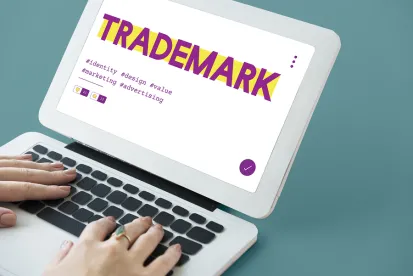The Trademark Modernization Act of 2020 (TMA) was passed by Congress on Dec. 27, 2020, as part of the omnibus coronavirus relief bill, also known as the Consolidated Appropriations Act, 2021. The main objective of the TMA is to remove registrations that are not in use, often called deadwood, and to expedite the lifecycle of fraudulent and suspect applications. The U.S. Patent and Trademark Office (USPTO) now has one year to enact rules to implement the processes and procedures of the TMA.
Legitimate business owners have found it increasingly difficult in recent years to find available trademarks. Some of the increase in trademark registrations has come from the globalization of the economy. However, programs that incentivize filing trademark applications, such as the Amazon Brand Registry and fraudulent and government incentivized filings from China have had a significant impact. Between 2012 and 2018, trademark filings originating from China increased 1,100 percent. While the USPTO sought to combat such filings by requiring that foreign applicants use U.S. attorneys and implementing programs aimed at identifying doctored evidence of use, more needed to be done.
FOUR KEY CHANGES RESULTING FROM THE TRADEMARK MODERNIZATION ACT
1. New proceedings to cancel registrations
The TMA provides two new procedures that permit anyone to challenge a trademark registration based on nonuse of the mark in connection with goods and/or services in the registration: expungement and reexamination. The two procedures are similar in many respects but two notable differences exist: 1) when a registration can be challenged and 2) the basis for the challenge. The proceedings are intended to be faster and less expensive than a traditional cancellation proceeding.
Under the expungement proceeding, the basis is that the mark of the registration was never used in connection with one or more of the goods and/or services listed in the registration. The basis of the challenge under the reexamination proceeding is that the mark was not used in connection with one or more goods and/or services at the time the trademark owner declared to the USPTO it was. Examples include when an applicant files a use-based application or statement of use for an intent-to-use-based application.
Reexamination proceedings can be brought any time up to the fifth anniversary of the registration. Expungement proceedings can be brought only between a registration’s third- and tenth-year anniversaries. However, any registration can be challenged in a cancellation proceeding at any time for having never been used and any registration can be challenged under the expungement proceeding for the first three years of the TMA.
Once a reexamination or expungement filing is made, it is then up to the USPTO Director to determine if the petition has enough merit to begin the proceeding. At that point, the filer’s work is done and it is then up to the trademark owner to come forward with evidence of use. If the trademark owner is able to show use, the challenged goods and/or services remain in the registration and cannot be challenged again under that proceeding by anyone else (but may be challenged through the other proceeding).
Key takeaways for trademark owners: Trademark owners are only required to submit one example of use of the trademark (specimen) for each class of goods or services, no matter how many goods or services are in each class. Each time trademark owners are required to submit evidence of use, they should go through the exercise of obtaining evidence for each good and service in the registration and archiving them, e.g. by sending them to their attorney. This will ensure that the mark is in fact used on each good and service, especially as trademarks and products evolve over time, and allow the owner to easily dispose of any expungement or reexamination proceeding, rather than hunting for pictures of products from years ago.
2. Shortened time to respond to refusals
Currently, applicants have six months to respond to refusals. However, under the TMA, response times will vary between sixty days and six months. Extensions of time will be available, but will also come with a fee.
Key takeaways for trademark owners: Trademark owners will need to be prepared to act fast or budget for what could be significant extension fees. Further, trademark attorneys will need to be diligent in calendaring the correct deadlines and available extensions.
3. Presumptions for trademark owners seeking court injunctions
In order to convince a court to issue a preliminary or permanent injunction, the harm to a trademark owner must not be correctable by monetary damages (irreparable harm).
For decades, patent and trademark owners were given a presumption that monetary damages would be inadequate if they proved that their patent or trademark was infringed (or that infringement was likely if the owner was seeking a preliminary injunction). In 2006, the U.S. Supreme Court decided that patent owners were no longer entitled to that presumption. Shortly thereafter, some, but not all, courts extrapolated the Supreme Court’s patent ruling to apply to trademark owners as well, leaving inconsistent and often conflicting laws based on where the court was located.
The TMA has restored the presumption of irreparable harm for trademark owners. Trademarks protect the reputation or goodwill of a company. Once that reputation is degraded in the minds of consumers, for example, from a cheap knockoff, it is difficult, if not impossible, to quantify the loss monetarily for what it will take to rebuild the reputation. Further, unlike patents, where it is common to be awarded a reasonable royalty or lost profits, trademark owners who prevail at trial very rarely are awarded meaningful damages. As such, injunctive relief is often the only real recourse.
Key takeaway for trademark owners: Court injunctions should be more attainable for trademark owners with strong cases.
4. Clear guidelines for submitting evidence to the USPTO for third-party applications
The USPTO has long informally permitted anyone, under certain circumstances, to submit evidence as to why a third-party application should not be registered. These submissions are called letters of protest. The TMA has made such submissions official, identifying what needs to be included in such letters, specifying how long the USPTO has to consider them, and permitting the USPTO to charge a fee for submission.
Key takeaway for trademark owners: There is more guidance as to the contents and consideration of letters of protest, but that will likely come with a cost. The letter of protest procedure will continue to be an inexpensive way to stop clearly problematic applications if filed promptly.
Overall impact of the Trademark Modernization Act
The TMA is the most significant trademark legislation passed in decades. Legitimate trademark owners will have stronger enforcement rights in courts through the restoration of the presumption of irreparable harm. Fraudulent applications and unused registrations will be more vulnerable to being cancelled through speedy, cost effective proceedings. It is now up to the USPTO and courts to flesh out the framework provided by the TMA.



 />i
/>i

